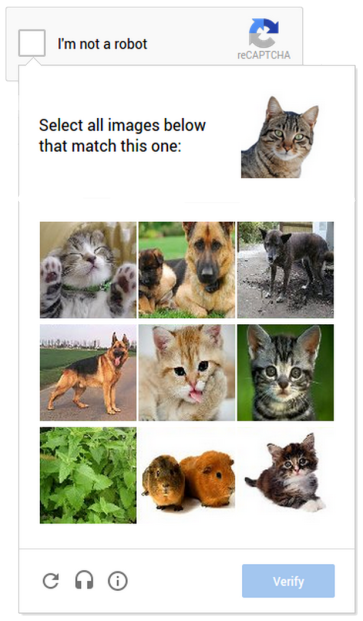How many times have you failed to login urgently to a website? IRCTC users, you folks must have a history of login troubles when something like whole world seems to depend on it. Apart from typo and memory errors for credentials, we often get stuck with CAPTCHAS. A quick round of Googling will tell you that, "A CAPTCHA is a program that protects websites
against bots by generating and grading tests that humans can pass but
current computer programs cannot.". But why in the world do we need to prove that we are humans?
The current state of Web Technology does not have any better ways than Captchas to avoid unintended usage of any of our accounts online. So, captchas are here and there everywhere. The more the algorithms behind them advance, the more cryptic and unintelligible they become to view and type. I regard myself as having very sharp eyes and yet when it comes to reading these captcha options, I regularly find it difficult to decipher the strings without taking at least a couple of attempts. And time-critical activities where login is delayed because of these visually heavy strings. Some sites do give an option for Audio options where the captcha strings can be heard but the Accessibility-reliant users may still find it hard to crack.
Thankfully, Google has devised a better algorithm that replaces the distorted text with a new experience where user simply need to tick a check-box to announce that they are not a bot. For the time being, websites have the option to stick with the old experience or move over to the new API. For users, that switch probably can’t come fast enough, so chances are most sites that are under active development will switch over pretty soon. The new API is given the name reCaptcha.
So why is Google making this switch? It turns out that the old-style CAPTCHAs weren’t all that good at keeping robots out anyway. With today’s technology, bots could solve CAPTCHAs with 99.8 percent accuracy. That makes them pretty much useless — except for one thing: reCAPTCHA was born of the idea that CAPTCHAs could be used to a) prove that somebody was human and b) help scan books. That’s because the old reCAPTCHA presented users with two words: one known one and one that OCR software had issues with. For the most part, it didn’t matter what you typed in for the second word, but once enough users typed in the same word, chances are that this was indeed the correct word. Over the last few years, Google also started using reCAPTCHA to transcribe house numbers from Street View.
Given that this new version hasn’t launched yet, it isn’t quite clear what impact it’ll have, but chances are far fewer users will see these prompts and hence Google will transcribe fewer words and numbers. The classic reCAPTCHA prompt will now only appear when Google’s algorithms aren’t quite sure that you are indeed human.
What this new API allows, however, is a far more flexible CAPTCHA experience. As Google announced today, for example, mobile users may soon see an image classification puzzle where they are asked to click on an image similar to the supplied one. This will help Google with its computer vision projects — something the company is probably far more interested in these days than basic OCR.
The new reCAPTCHA is already live on a couple of sites, including Snapchat, WordPress and Humble Bundle.
Thankfully, Google has devised a better algorithm that replaces the distorted text with a new experience where user simply need to tick a check-box to announce that they are not a bot. For the time being, websites have the option to stick with the old experience or move over to the new API. For users, that switch probably can’t come fast enough, so chances are most sites that are under active development will switch over pretty soon. The new API is given the name reCaptcha.
So why is Google making this switch? It turns out that the old-style CAPTCHAs weren’t all that good at keeping robots out anyway. With today’s technology, bots could solve CAPTCHAs with 99.8 percent accuracy. That makes them pretty much useless — except for one thing: reCAPTCHA was born of the idea that CAPTCHAs could be used to a) prove that somebody was human and b) help scan books. That’s because the old reCAPTCHA presented users with two words: one known one and one that OCR software had issues with. For the most part, it didn’t matter what you typed in for the second word, but once enough users typed in the same word, chances are that this was indeed the correct word. Over the last few years, Google also started using reCAPTCHA to transcribe house numbers from Street View.
Given that this new version hasn’t launched yet, it isn’t quite clear what impact it’ll have, but chances are far fewer users will see these prompts and hence Google will transcribe fewer words and numbers. The classic reCAPTCHA prompt will now only appear when Google’s algorithms aren’t quite sure that you are indeed human.
What this new API allows, however, is a far more flexible CAPTCHA experience. As Google announced today, for example, mobile users may soon see an image classification puzzle where they are asked to click on an image similar to the supplied one. This will help Google with its computer vision projects — something the company is probably far more interested in these days than basic OCR.
The new reCAPTCHA is already live on a couple of sites, including Snapchat, WordPress and Humble Bundle.

No comments:
Post a Comment